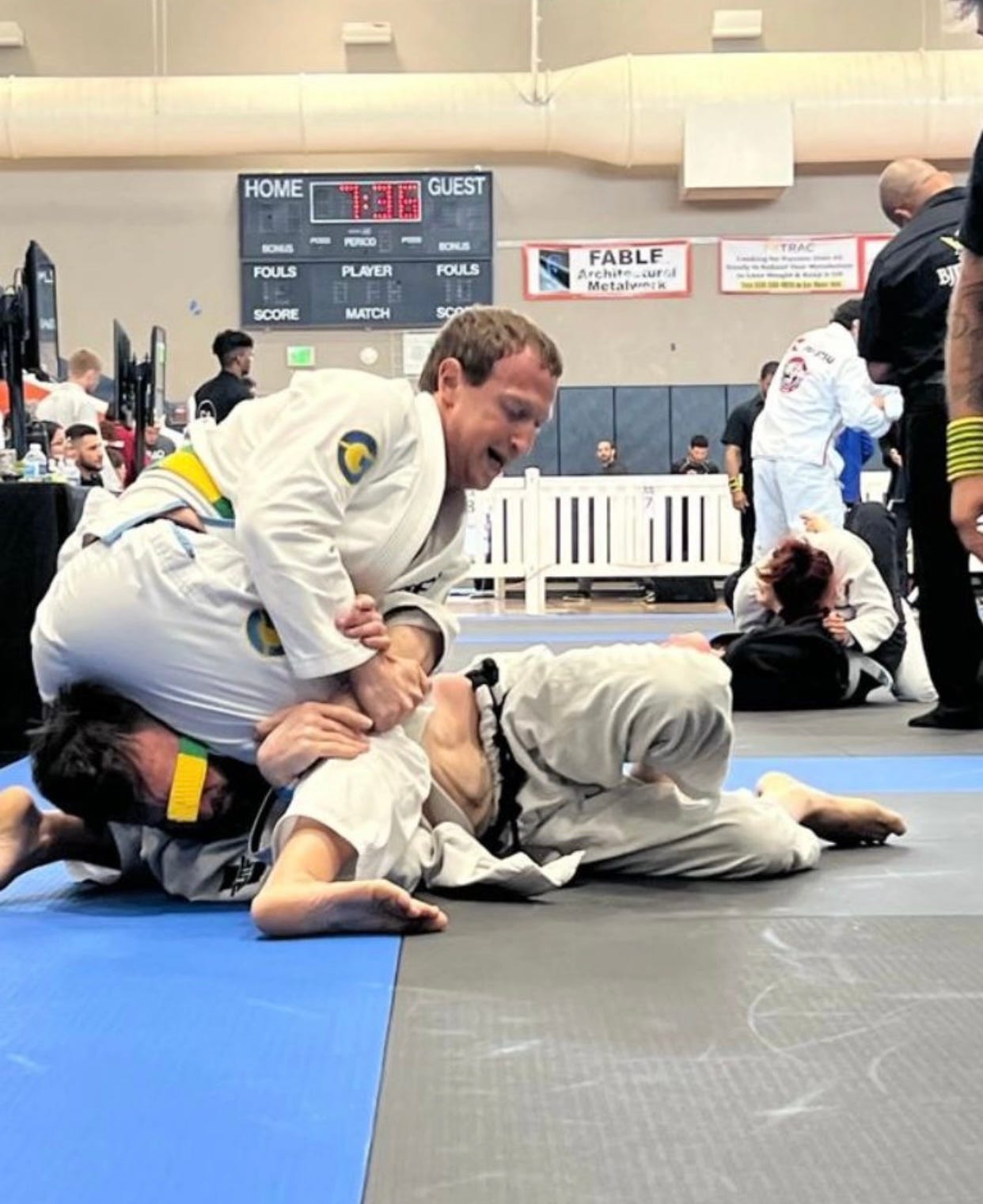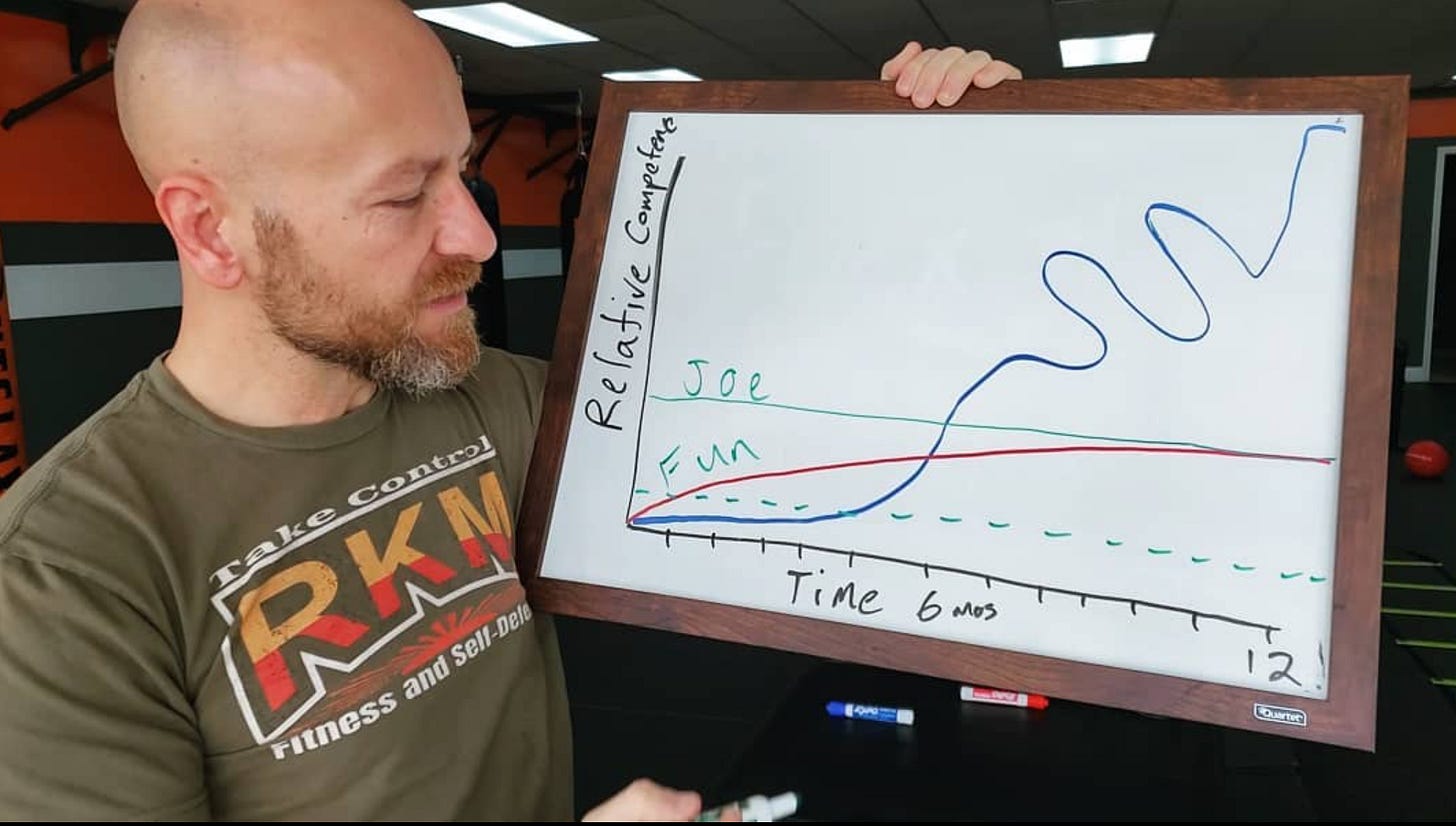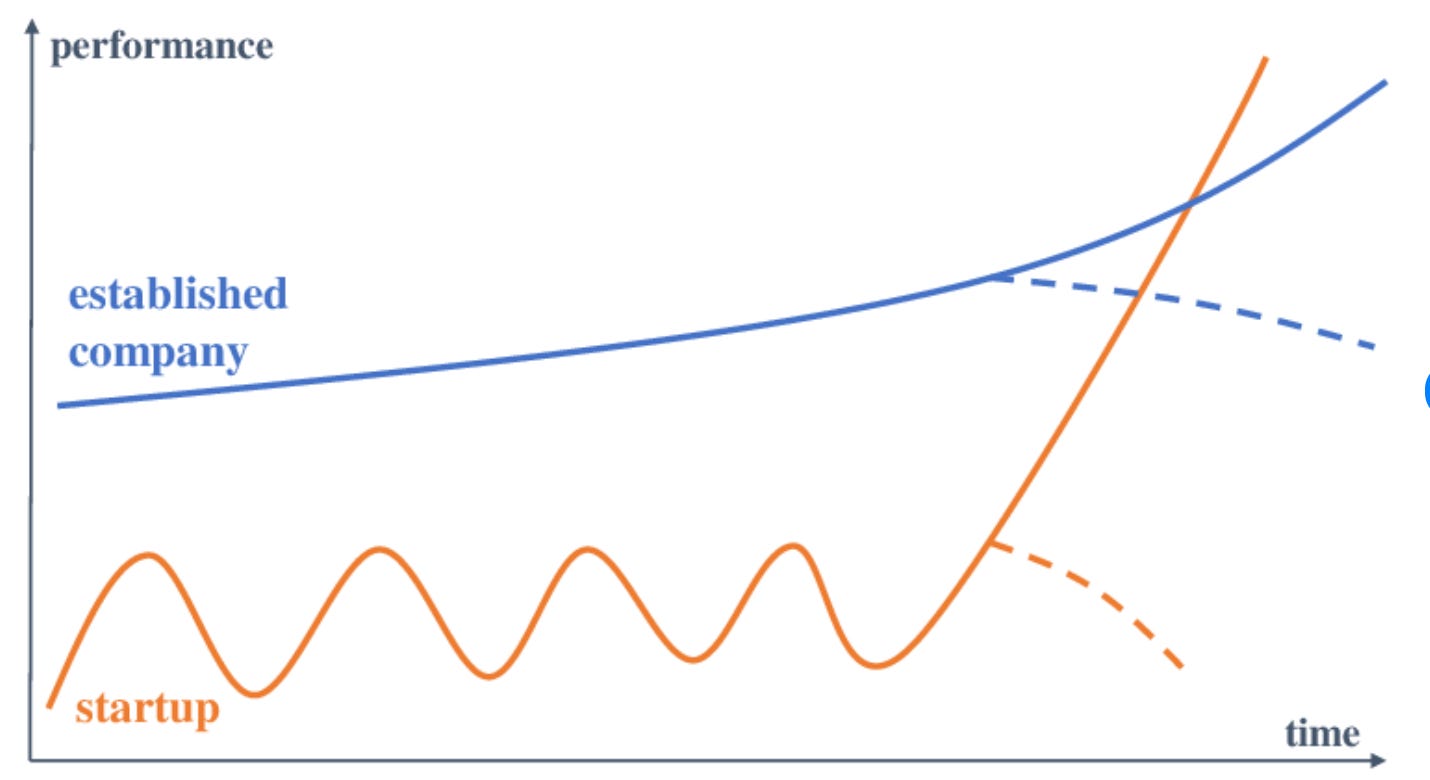The art of the grind: how Brazilian Jiu-Jitsu syncs with the tech world
Reflections on my Jiu-Jitsu journey and valuable routines for other techies
Brazilian jiu-jitsu (BJJ) is taking centre stage, riding a wave of attention following Mark Zuckerberg's public alignment with the sport. Zuckerberg, joining celebrities like Tom Hardy, spoke about the intricate dance of mind and body in BJJ during a recent stint on the ‘Joe Rogan Experience.’ That’s how Mark looked on the mats at a no-gi (no-kimono) tournament.

Zuckerberg talked about BJJ's intellectual and physical engagement, describing it as a task where distractions are not an option. But the resonance between BJJ and the universe of tech entrepreneurs and venture capitalists (VCs) is more profound, rooted in the shared DNA of learning curves and growth trajectories.
Unlike more immediate, striking sports, BJJ embodies a slow burn of progress (Chart 1). There's a visible plateau where, seemingly, nothing changes. It's an intricate, sometimes frustrating process – a description that many in the startup ecosystem will find strikingly familiar.
Chart 1: Grappling (blue) vs striking (red) relative to ‘Joe’’ competence over time. By Icy Mike, explainer

The chart may raise discussions regarding its timing and the limits it places on striking progress. However, it nails the essence of BJJ progression – an initially tedious grind giving way to sharp transformation. Very similar to the way how startups work (Chart 2).
Chart 2: Performance over time, established companies vs startups, source

BJJ’s appeal doesn't stop there. Its microcosm mirrors the startup journey, providing a mental outlet for those in the throes of building something from scratch. When validation and external evaluation are nowhere in sight (customers are not yet using your product, a funding round is months/years away, papers could not be published due to confidentiality, etc.), the journey becomes a grind. BJJ offers respite.
On the mats, every twist and turn is a win or a loss, providing immediate feedback and external validation that the technology world often lacks. Unlike football or other sports, where a draw is possible, a tie is not an option in BJJ (in line with IBJJF rules). The number of techniques and strategies one tries before finding a winning combination makes BJJ an enticing parallel to the rapid iteration cycles of the tech industry.
Furthermore, BJJ humanizes tech workers trapped behind screens, surrounded by command line interfaces and calls. Physical interaction on the mats restores a sense of embodiment without the violence of striking sports.
The camaraderie with fellow practitioners brings another layer of connection, a perfect blend of support and competition. The proportion of team versus individual work resembles venture capital/tech, where the interconnectedness of the deal flow & transactions/tech stack & code bases coincides with tones of isolated work and competition.
One of the standout features of BJJ is its inclusivity. Unlike team sports, or even tennis, where skill-level disparities can cause tensions within a team/between partners, BJJ accommodates individual growth trajectories. During every given class, you’ll likely find partners who are similar and below/above your level. And even if you may not make it to the competition team in your gym, you will still not be left behind.
For some, like myself, BJJ becomes more than a hobby. Even as life, work, and other commitments interrupted my ca. 310-hour-long BJJ journey (Chart 3), the community embraced me, allowing me to progress at my own pace. Getting the opportunity of working at your own pace is priceless for techies and VCs, who are constantly driven by sprints, releases, FOMO, chasing deals, etc. It’s almost meditative being allowed to practice one move for hours or days if needed.
Chart 3: # and type of BJJ sessions taken per quarter, stripes/belts awarded. By Peter Zhegin

The flexibility extends to training styles (gi or no-gi), competition involvement, and, more importantly, strategy (game). Building your own game based on personal preferences and body type is a fantastic experience. And being able to test it against opponents within and outside your weight class is priceless. BJJ allows the joy of rolling with opponents outside one’s weight class, a near impossibility in striking sports, and again symbolic to the tech world, where nimble startups challenge incumbents.
In London, the thriving BJJ scene includes personal favourites like ZR Team/Fight City Gym (Moorgate) and Roger Gracie Academy HQ (Hammersmith). With a modest 30-50 hours per quarter, the sport promises an enriching experience.
My own foray into BJJ began in my early-30s. While I don’t compete much, my time with the sport has taught me that BJJ doesn't demand a drastic lifestyle change (no need for special nutrition, additional gym/weight time, expensive equipment). It organically integrates into daily life – unless, of course, competing in tournaments becomes the goal.
So why not give it a roll? Feel free to drop me a line if you have questions or want to meet on the mats. In the intertwining worlds of tech and BJJ, there might be more fun than you think.